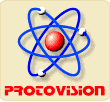How does Wheels SC improve Wheels?
What changes are made that improve Wheels in Wheels SC?
One thing you?ll notice is there are only two files to contend with on the boot
disk. As usual, STARTER gets things fired up. It has the job of booting up the
other file, the SYSTEM file. Contained within the SYSTEM file is the kernal, the
Toolbox, the Dashboard, and the default input and printer drivers. No other
files are needed to get up and running. The very first bootup will guide you
through configuring the SYSTEM file and any changes made can be changed again
from the Dashboard. All Toolbox functions are accessible from the Dashboard
menus. The Toolbox interface will no longer be used.
There is only one Wheels SC version. It doesn?t matter if you boot up from a
64 or a 128, it will work with either. If booted up from a 64, it will act more
like Wheels 64 and use 40 column mode. If booted from 128 mode, it will act
like Wheels 128 and will offer both 40 and 80 column modes.
Wheels SC does not fit on a 1541 disk. It will be supplied on a 1571, 1581, or
FD Native disk.
Once booted, the Toolbox and Dashboard will remain in memory. Exiting an
application is immediate since the Dashboard doesn?t need to be reloaded from
disk.
The biggest thing the user will notice is an improved Dashboard. Too early to
discuss it too much, but it will have features that let you configure your
drives easier. You?ll even be able to create partitions on the CMD devices like
you can with HD-TOOLS, etc. Now, when you double click on a drive icon, if
it?s a partitionable device a window doesn?t pop open showing the current files
in the current partition. Instead it opens a window showing an icon for each
partition. You can then double click on a partition to open it into another
window. Anyway, in the partition window, you can rename partitions, create new
ones, etc.
The Dashboard will be able to copy files to/from MS-DOS disks. It will be able
to access CD-ROM drives connected to the HD. Lots of neat new features will be
in the Dashboard.
Classic GEOS and Wheels applications will still work. You?ll be able to task
switch between multiple applications. The number of apps you can have loaded at
one time will depend on available memory. New applications that are written
specifically for Wheels SC will be able to take advantage of its multitasking
ability. New apps can also open up using the entire screen for itself like
current applications do or it can run within a window on the Dashboard. This
depends on how the programmer wishes to do it.
Wheels SC will also have all the Wave networking routines built into the OS
instead of in Wave SC (also supplied with Wheels SC). This way, other
applications can make use of the same routines. This will make it easier to
build separate Internet applications that need to do some of the same type of
stuff.
The windowing routines from both the Dashboard and The Wave are in the OS. New
apps can make use of these routines. This includes routines to make windows that
are moveable, resizable, with scrollbars, function buttons, etc.
Up to 8 drives (A-H) can now be used. 1541 and 1571 partitions are also
supported on the FD, HD, and RL. Also, the new extended native partitions on the
HD are supported. Current apps may not work well with drives E-H. They probably
won?t even know they are there. So, the usual drive swapping routines are still
employed. Remember, some of the old apps only work with A and B.
I plan to take geoBasic and modify it for use in Wheels SC. This will make an
easy to use programming tool for people who can work with Basic. geoBasic is
also nice because it can help you build dialog boxes, menus, and other things.
And of course, the geoBasic bugs will get fixed. Concept+ will get upgraded to
Concept SC and will add more features for those who prefer to use assembly
language.
From a programmer?s point of view, the operating system no longer resides in
bank 0 of the SuperCPU memory. What?s in bank 0 where classic apps run is a
series of jump tables and a few other assorted routines to make the new system
work with old apps. All kernal routine calls are transferred to the actual SC
kernal. For new apps, the same kind of GEOS thinking is employed where a jump
table can always be found in a fixed location. It is always in bank
2. A simple JSL can call any kernal routine. Selected Toolbox and Dashboard
routines can also be accessed from the new jump table. New apps will always be
loaded into a 64K bank somewhere in memory. The app will have the entire bank of
memory to itself (and more if needed). New apps are expected to run in native
65816 mode while current apps default to 6502 emulation mode. The kernal takes
care of handling the processor mode switching during task switching and
multitask handling. The kernal always runs in native 65816 mode.
- Maurice
** Maurice Randall – Click Here Software Co.
** High-Performance for your Commodore
** email: maurice@cmdrkey.com, support@cmdrkey.com
** web: http://cmdrkey.com
Discussion: 4 reactions


